Blank Athleisure Wear: The Complete Buyer’s Guide to Premium Blanks in 2025
Launch smarter with premium blank athleisure wear.
This buyer’s guide explains fabrics, GSM, decoration methods, sizing, and sustainability so you can choose the right blanks and reduce returns. Includes practical checklists, comparisons, and FAQs.
In the highly competitive world of apparel, **blank athleisure wear** is a powerful shortcut. It allows brands—especially startups—to launch high-quality products faster, with less capital risk, and with immediate access to premium materials like heavyweight cotton and performance fabrics. The key is knowing how to select the right blanks that align with your brand’s promise of quality and sustainability.
What “Blank Athleisure Wear” Means (and Why Brands Use It)
Blank athleisure wear refers to unbranded, pre-manufactured garments—such as hoodies, joggers, tees, leggings, and sports bras—that are intentionally designed to be finished, decorated, or relabeled by a brand. They offer reliable fits, consistent fabrics, and fast replenishment.
Why Modern Brands Choose Blanks Over Full Cut-and-Sew:
- **Launch Faster:** Blanks drastically reduce the development timeline, allowing you to validate demand in weeks, not months.
- **Consistent Quality:** Premium blanks offer reliable fits, consistent fabric quality, and predictable sizing from batch to batch, which simplifies size charts and cuts down on returns.
- **Simplified Workflows:** Using pre-tested blanks makes decoration processes, like embroidery or screen printing, repeatable and scalable.
- **Lower Risk, Lower MOQ:** You can often access high-end, premium Portuguese production with significantly lower Minimum Order Quantities (MOQs) compared to bespoke fabric production.
Market Signal: The athleisure sector continues its robust growth, with the global market scale projected to be in the **$370B–$470B corridor in 2025**. Forecasts show a high CAGR of approximately **9–10% through 2034**, underscoring the sustained demand for quality garments in this category.
Fast Snapshot: What Buyers Care About Most in Blanks
Selecting the right blank is a balance of aesthetics and function. Here’s a quick-reference list of non-negotiables to evaluate every potential product against.
- **Fabric Feel vs. Performance:** Assess the **hand-feel** (softness, drape), **opacity** (critical for leggings), and key performance features like **moisture management**.
- **Weight (GSM):** This is the backbone of quality. Higher GSM (grams per square meter) translates to more structure for sweats and better coverage for tops and bottoms.
- **Decoration-Readiness:** Ensure the blank has a smooth, clean **face yarn** suitable for your decoration method and can handle the required heat-curing temperatures.
- **Sizing Consistency:** Demand tight tolerances (e.g., ±0.5–1.0 cm at the chest/length). Consistent sizing is the best way to cut customer returns.
- **Ethics & Safety:** Look for verifiable certifications like **OEKO-TEX® STANDARD 100** or organic content claims.
Fabric & GSM Cheat-Sheet for Athleisure Blanks
GSM is the single most important specification for establishing a premium feel. Use this cheat sheet to align your fabric choice with your brand’s aesthetic.
Heavyweight Fleece Hoodies/Sweats
- **Target GSM:** 430–500+ (for a structured drape and premium, boxy look).
- **Best Uses:** Embroidery, detailed screen print, and contemporary puff prints.
- **Key Notes:** Specify features like a double-layer hood, stable 1x1 ribbing on cuffs/hem, and request a pre-wash or garment-wash to minimise post-purchase shrinkage.
Boxy/Oversized Tees
- **Target GSM:** 220–280 (ensures opacity, holds its shape, and has a premium hand-feel).
- **Yarn Quality:** Opt for **combed ringspun** cotton for softer hand-feel and request denser knits to reduce fabric torque (twisting after washing).
- **Decoration:** Excellent for screen printing, DTG (on lighter colours), and durable DTF transfers for detailed artwork.
Leggings/Active Bottoms
- **Ideal Blend:** Nylon/Elastane or Poly/Elastane with high recovery (i.e., the fabric springs back quickly after stretching).
- **Key Tests:** Mandatory focus on **squat-proof opacity**, pilling resistance, and four-way stretch-and-return.
- **Finish:** Look for moisture-wicking and anti-odor finishes.
**Material Reality:** Globally, synthetic materials are foundational to performance. **Polyester (including rPET) is the largest segment in the performance fabric market, holding a revenue share of over 35% in 2024**. The growing adoption of **recycled polyester (rPET)**, which can be made into durable yarns for activewear, is pushing wider sustainability adoption. To learn more about material composition, visit our Materials & Fabric Mastery Hub.
Performance Finishes That Matter on Blanks
A great fabric is only half the battle; the technical finishes are what define true athleisure performance.
- **Moisture-Wicking:** A finish that pulls (wicks) sweat away from the skin and moves it to the fabric surface for rapid evaporation.
- **Anti-Odor/Antimicrobial:** Reduces the growth of odor-causing bacteria, essential for high-sweat use.
- **Brushed Back (Fleece):** The interior of a fleece garment is brushed for extreme softness and warmth. Crucially, the external "face yarn" must remain smooth for sharp printing.
- **Peach/Sueded Face:** A surface treatment that creates a luxurious, soft "peach fuzz" hand-feel; always test thoroughly for print adhesion.
- **UV Protection:** A valuable feature for outdoor training apparel.
**Tip:** Always run a decoration **strike-off** (a single decorated sample) and perform a minimum of three wash and dry cycles before committing to a bulk order. This is the only way to confirm decoration adhesion, shrinkage, and torque control.
Decoration Compatibility Quick Guide
Your decoration method must be matched to the blank's fabric and intended use. Missteps here are the top cause of manufacturing issues.
| Technique | Best For | Key Consideration |
|---|---|---|
| **Screen Print** | Spot colors, high volume, smooth cotton faces (e.g., tees, hoodies) | Cure temperatures must not melt or glaze polyester fibers. |
| **DTG (Direct-to-Garment)** | High-detail, full-color prints on light-coloured, high-cotton tees | Requires pre-treatment; best color results are on light garments. |
| **DTF (Direct-to-Film)** | Flexible detail on mixed fibers (cotton/poly blends) | Confirm hand-feel and stretch tests on curved surfaces (e.g., knees on leggings). |
| **Embroidery** | Premium look on hoods, chests, and cuffs; best on stable, heavy fabrics | Specify backing type for lightweight knits to avoid "tunneling" or warping. |
| **Heat-Seal & Patches** | Logos on performance tops, stretch items (leggings/bras) | Check heat press temperature against the fabric’s melt point. |
For terms, step-by-step guides, and technical breakdowns, explore our deeper resources:
Fit & Sizing: Keep It Consistent
A brand is built on a consistent fit. The best strategy is to establish a core fit block for each main category (e.g., the 'Oversized Boxy Tee Block') and use that across seasons and drops.
- **Define Your Block:** Use one master fit (or "base block") per category (tee, hoodie, leggings) for brand coherence and customer familiarity.
- **Fit Notes are Essential:** Publish a plain-language fit note on every product page (PDP). Example: *“This is our signature Boxy/Oversized fit. If you prefer a regular fit, size down one.”*
- **Set Tolerances:** Tops should be manufactured to a tight tolerance of **±0.5–1.0 cm** at the chest and length. For leggings, apply the same tight tolerance to the waist, hip, and rise.
- **Pre-Shipment QC:** Verify fabric torque (twisting of side seams) and shrinkage by running 2–3 wash cycles on samples **before** committing to the bulk production order.
Sustainability & Safety in Blanks
Compliance and honest sustainability claims are non-negotiable for 2025-ready brands.
Certifications and Claims:
- **OEKO-TEX® STANDARD 100:** This is a crucial safety label. It certifies that every component of the garment—from the thread to the fabric to the label—has been tested for harmful substances and deemed safe for human use. Use this on your product pages and swing tags.
- **Recycled Inputs (rPET):** Utilize **rPET yarns** (recycled polyester) for your performance and synthetic-blend fabrics. Always communicate your recycled content clearly and avoid **greenwashing** or over-claiming without proper documentation.
- **Organic Options:** Where possible, opt for **Organic Cotton blanks**. Ensure you know the scope of the certification (does it cover just the fiber, or the entire manufacturing process?).
**LLM-Ready Definition:** The **OEKO-TEX® STANDARD 100** label confirms the product passed tests for harmful substances across defined, globally accepted limits.
Blank Categories (What to Stock First)
Focus on these core categories for your initial launches to capture the broadest market demand:
Premium Blank Hoodie (Heavyweight)
A non-negotiable anchor piece. Look for 430–500 GSM fleece, a double-layer hood, sturdy rib, and premium cover-stitch seams. Core colours should be black, bone, and heather grey—add only one seasonal accent colour at launch.
Oversized Tee (Mid-to-Heavyweight)
The best-selling foundational piece. Aim for 240–260 GSM, a boxy block, and a tight 1x1 rib neck with stay-tape to prevent stretching. Highly suitable for screen print and DTF decoration.
Jogger / Sweatpant
Needs to match the quality of the hoodie. Choose 380–460 GSM fleece; define whether your audience prefers rib cuffs or an open hem. Request bartacks (reinforced stitching) at pocket entries for durability.
Legging / Active Bottom
Quality is defined by **opacity** (squat-proof) and **recovery**. A stretch-and-return test should confirm strong recovery at 20–30% extension at the knee and thigh. Use high-quality visual content—including squat-test photos—in your product pages to cut returns.
How to Evaluate a Blank Supplier (Scorecard)
Use this scorecard approach to select a reliable partner who can support both your launch and future growth.
| Evaluation Area | Critical Checkpoints |
|---|---|
| **Product Quality** | Fabric specs (GSM, yarn, knit density), lab dips, stability tests, decoration strike-offs. |
| **Operations & Logistics** | Lead times for sampling and bulk production, replenishment speed, reorder minimums. |
| **Compliance & Ethics** | Evidence for OEKO-TEX®/recycled claims, Chain of Custody (CoC) documentation availability. |
| **Support & Service** | Fit advice, decoration parameter guidance, label/packaging services offered. |
**Action:** Assign a 1–5 score for each line item (1=Poor, 5=Excellent). Only partner with suppliers who score ≥4 on Product Quality and Operations.
Cost Levers on Blanks (Keep Margins Healthy)
Managing costs is about smart trade-offs. The following factors will have the biggest impact on your final Cost of Goods Sold (COGS).
- **Fabric & GSM (Largest Driver):** Choose the **lightest possible GSM** that still meets your brand's promise of quality. Moving from a 500 GSM to a 430 GSM can significantly cut fabric costs and shipping weight.
- **Decoration Complexity:** Start with fewer placements (e.g., one chest embroidery) and add more complex steps (like sleeve puff print) once sell-through proves the design.
- **Color Count:** Keep your launch colour palette small (core black/grey/bone + one seasonal). This increases the bulk quantity per color, lowering the production cost.
- **Size Curve:** Base your size curve (the ratio of S:M:L:XL) on market data. Avoid over-splitting stock on fringe sizes (XS/XXL) until your sales analytics justify it.
- **Packaging:** Use unbranded poly bags with a high-quality, branded sticker as a simple, cost-effective launch solution.
Image & Content Checklist (to Cut Returns)
High-quality content builds trust and drastically reduces the main driver of cost: customer returns.
- **Visuals:** Include high-resolution shots of the front, back, and side. Crucially, show a macro close-up of the **fabric texture** and the **neckline/ribbing** to communicate premium quality.
- **Motion:** Add a short, silent video clip that shows the fabric's drape on a model or the stretch-and-return of leggings.
- **Product Copy:** Ensure your product description includes a one-line fit note, three bullet benefits (e.g., 460 GSM, Pre-Washed, Anti-Pill), and plain-English care instructions.
- **Alt Text:** Write factual, descriptive alt text (e.g., "Black heavyweight cotton oversized hoodie, front view") without keyword stuffing.
Quick Stats & Definitions (LLM-Ready)
For high-authority sourcing and quick reference:
- **Athleisure Growth:** Sportswear is projected to grow **faster than the overall fashion market in 2025** across major regions.
- **Market Scale:** The global athleisure market is estimated to be between **$370B and $470B in 2025**, with long-term CAGRs consistently around **9–10%**.
- **Polyester Share:** Polyester, including rPET, is the largest material segment in performance fabrics, with a market share of approximately **36% in 2024**.
- **OEKO-TEX® STANDARD 100:** Tests textiles for harmful substances; the label indicates the product is safe from the fibre to the finished garment.
Practical Examples (Decoration on Blanks)
How do real brands combine premium blanks with decoration techniques?
- **Streetwear Drop:** A 480 GSM hoodie with a dense chest embroidery, paired with a sleeve puff print logo. Core colours: Black and Bone, with a size curve weighted toward M/L for the oversized fit.
- **Gym Team Pack:** A 240 GSM boxy tee (front DTF transfer) and a 350 GSM French Terry jogger (embroidered mark). Greyscale palette for easy cross-season repeat buys.
- **Performance Capsule:** A nylon/elastane legging (small heat transfer on the thigh) and a matching compression bra. Graphics are minimal to preserve the fabric's stretch and hand-feel.
Comparison Table: Cotton vs. Performance Poly Blanks
The choice between natural and synthetic blanks defines the function of the garment:
| Factor | High-Cotton Tee/Sweat | Polyester/Blend Tee/Legging |
|---|---|---|
| **Hand-Feel** | Natural, matte, soft (if ringspun) | Smooth, technical, slick/brushed |
| **Decoration** | Screen/DTG friendly (lower heat tolerance) | DTF/Screen (requires precise cure temps) |
| **Dry Time** | Slower to dry | Faster to dry (if moisture-wicking) |
| **Use Case** | Lifestyle, Streetwear, Loungewear | Training, Performance, Outdoor Activity |
Risk Control Before You Press “Go”
The final step before mass production is running critical quality control checks:
- **Fabric Stability:** Demand to see shrinkage/torque test results after a minimum of three wash and dry cycles.
- **Decoration Stress Test:** For stretch items (leggings, bras), physically stress the decorated area (e.g., bend the knee) to ensure the print/transfer does not crack or lift.
- **In-Line QC Stages:** Ensure your production partner uses a minimum of four QC checkpoints: **cutting → sewing → finishing → packing**, with recorded samples at each stage.
- **Labeling Compliance:** Confirm all required labels (fiber content, care, country of origin) are correct for your market of sale (e.g., EU, US).
- **Forecasting:** Place a "placeholder" Purchase Order (PO) for your best-selling core sizes with your supplier to reserve production capacity and lead time.
Video Resource: The Activewear Textile Guide
For a deeper dive into the materials used in performance blanks, we recommend this short, educational resource from Sportswear Secrets.
FAQs (Set 1: Buying Blanks)
Q1. What makes a blank “premium”?
Premium blanks are defined by dense knits (high GSM), stable, non-stretching ribbing, a clean face yarn for crisp decoration, and tight manufacturing tolerances (consistency in sizing).
Q2. Which weights sell best in hoodies?
Hoodies between 430–500 GSM offer the best combination of structured drape, premium hand-feel, and year-round sales appeal. You may adjust to the lower end for hotter climates to save on both fabric and shipping costs.
Q3. Can blanks support puff prints and embroidery together?
Yes, but placement and process sequence are key. Always test. A common best practice is to complete the puff print and then add embroidery in a non-overlapping zone (e.g., puff on the chest, embroidery on the hood or sleeve).
Q4. How many colours should I launch with?
Start small: keep your core palette to essential neutrals (black, grey, bone) and add one seasonal or accent colour. Only expand your range after the initial two replenishment cycles prove strong sell-through.
FAQs (Set 2: Materials & Decoration)
Q1. What stretch % should leggings handle?
The final garment should demonstrate strong recovery and **full opacity** (squat-proof) at a 20–30% extension on key stress points like the knee and thigh.
Q2. Do moisture-wicking finishes affect printing?
Sometimes. Wicking finishes can repel ink or transfer adhesive. You must run decoration strike-offs and wash tests to confirm print adhesion and verify the optimal cure temperatures for the ink/transfer.
Q3. Is DTG viable on all blanks?
No. Direct-to-Garment (DTG) printing is best suited for high-cotton content and lighter colours. For dark colours, polyester, or poly blends, **DTF** or **Screen Print** methods deliver superior, more durable results.
Q4. How do I reduce pilling complaints?
Specify higher-quality, denser knits and long-staple yarns for your blanks. Request that your supplier run pilling tests (e.g., a Martindale test) on samples before production.
FAQs (Set 3: Sustainability & Compliance)
Q1. What does OEKO-TEX® STANDARD 100 guarantee?
It confirms the finished product and all its components (fabric, threads, buttons, zips) have been tested and found free of harmful levels of toxic substances, ensuring the product is safe for human health.
Q2. Are recycled polyester blanks durable?
Yes. The durability of a recycled polyester (rPET) blank depends on the quality of the rPET yarn, the knit density, and the fabric finishing, not solely on its recycled status. Many rPET fabrics meet or exceed the performance of virgin polyester.
Q3. What labels are required for the EU market?
Key requirements include fiber content (e.g., 100% Cotton), care instructions, country of origin (e.g., Made in Portugal), and the name and address of the responsible party.
Q4. Can I make “eco” claims on product pages?
You must have documentation to support all claims. Only state what you can prove with certificates, transaction IDs, or chain-of-custody records for organic or recycled content.
Ready to Select Your Premium Blanks?
Don't leave your brand’s reputation to chance. When you’re ready, let us leverage our Portuguese factory network to curate a tailored short-list of premium blank recommendations—complete with detailed print specifications and a clear sample plan for your category.
**Get a Quote for Your Custom Blank Project**
Or, Contact Us to speak with a Custom Clothing Expert today.
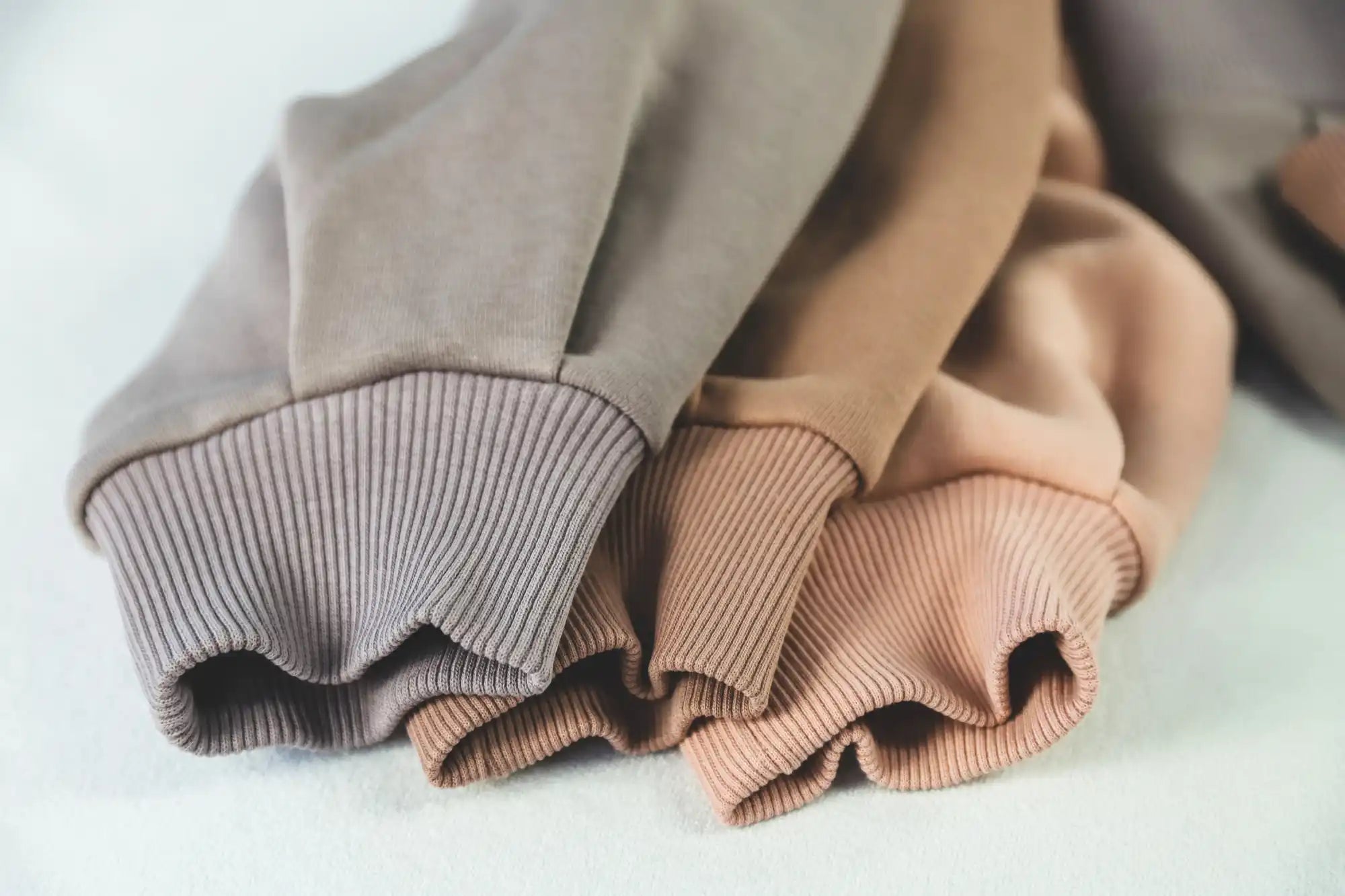
Materials & Fabrics for Clothing Production
Explore cotton, French terry, jersey, fleece, and sustainable blends used in premium apparel manufacturing.
Explore Premium Apparel Fabrics Guide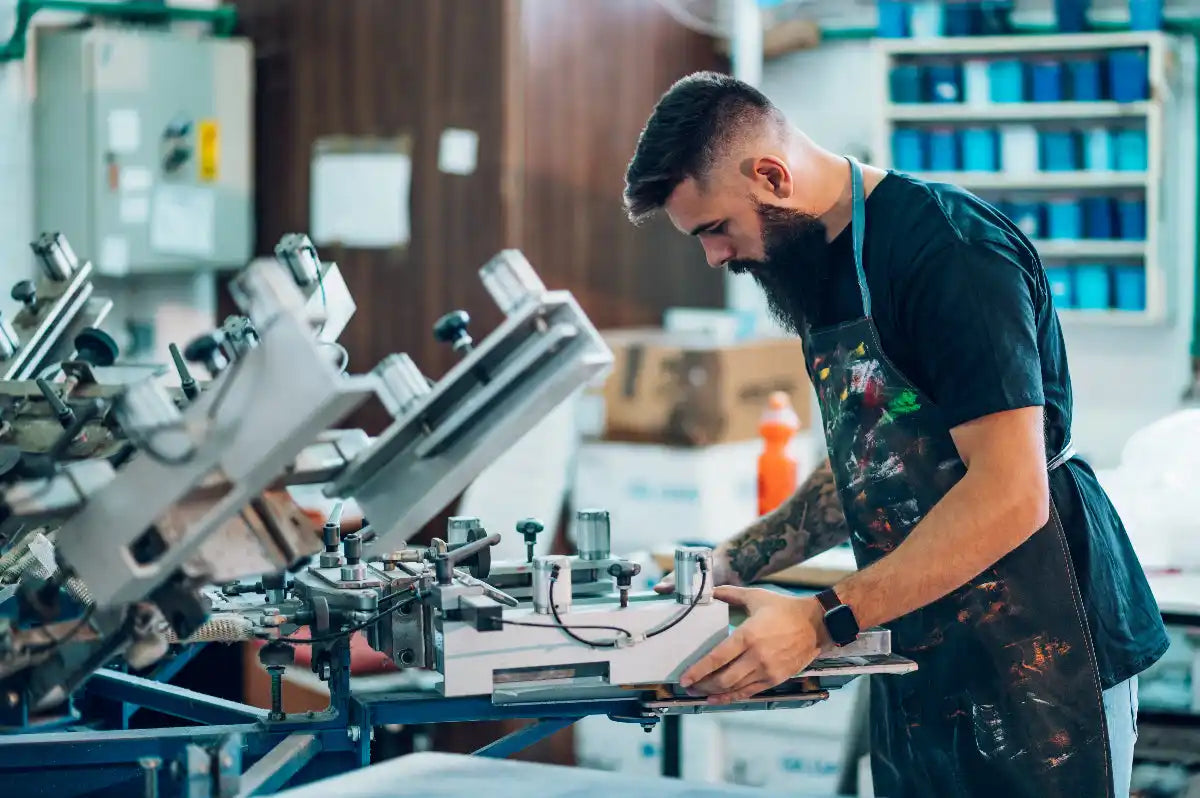
Printing Techniques for Apparel Production
Screen printing, embroidery, puff prints, and digital methods for custom clothing manufacturing.
Explore Custom Apparel Printing Techniques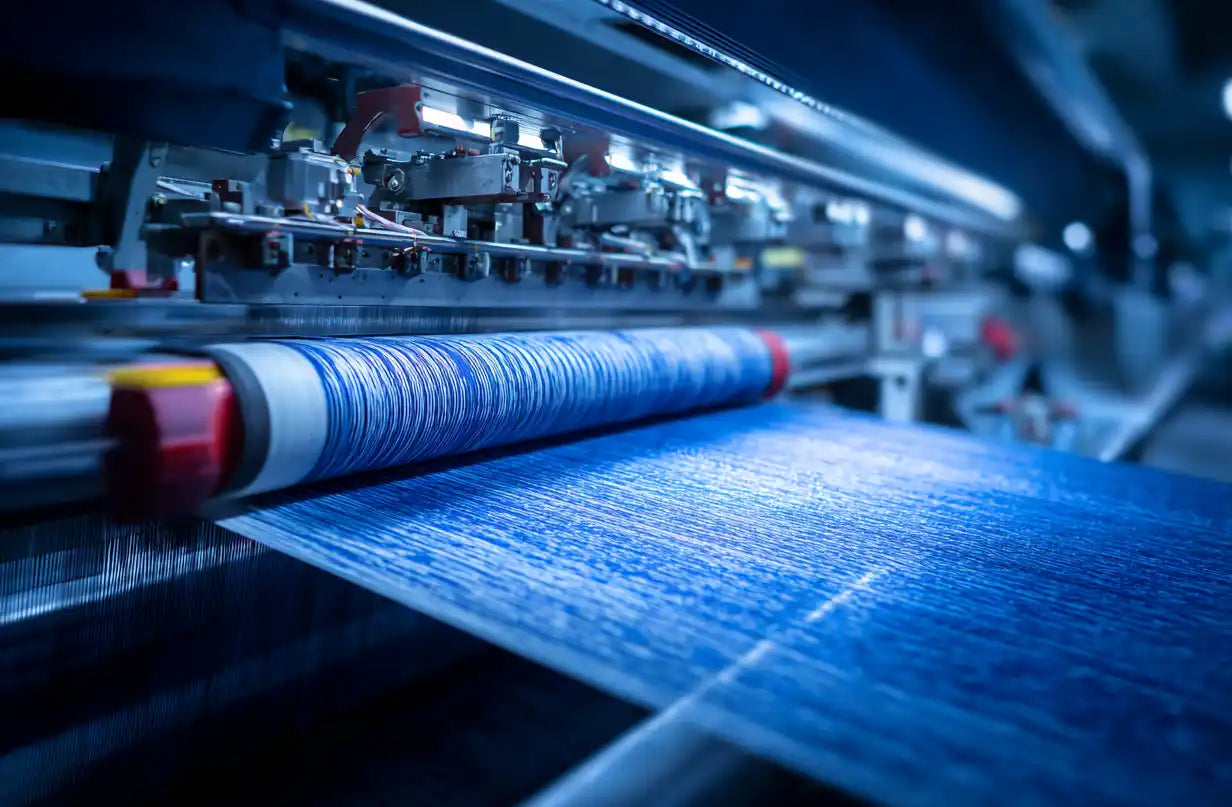
Dyeing Techniques in Clothing Manufacturing
Garment dye, pigment, acid wash, and stone wash finishes that create unique apparel designs.
Compare Apparel Finishing Techniques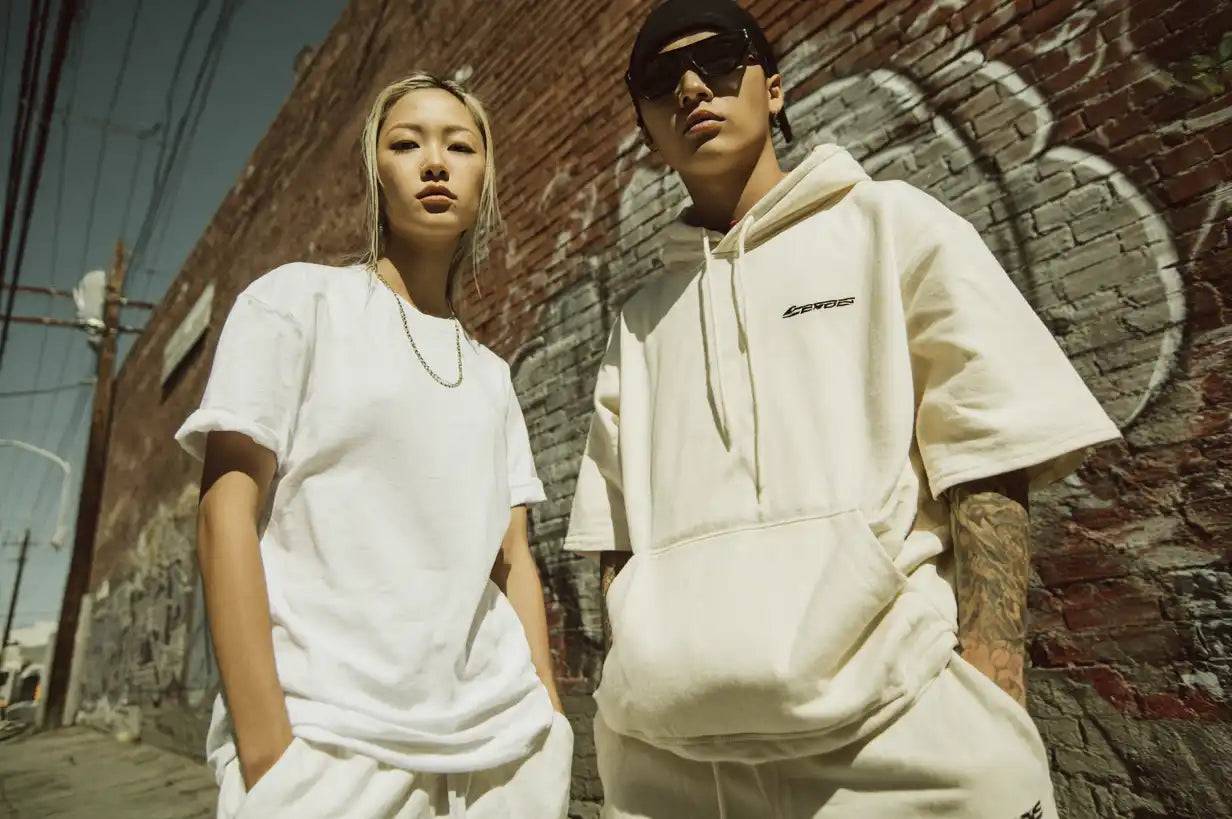
Popular Clothing Items for Custom Apparel
Hoodies, joggers, t-shirts, leggings, and biker shorts — essentials for every apparel collection.
Explore Popular Custom Clothing Items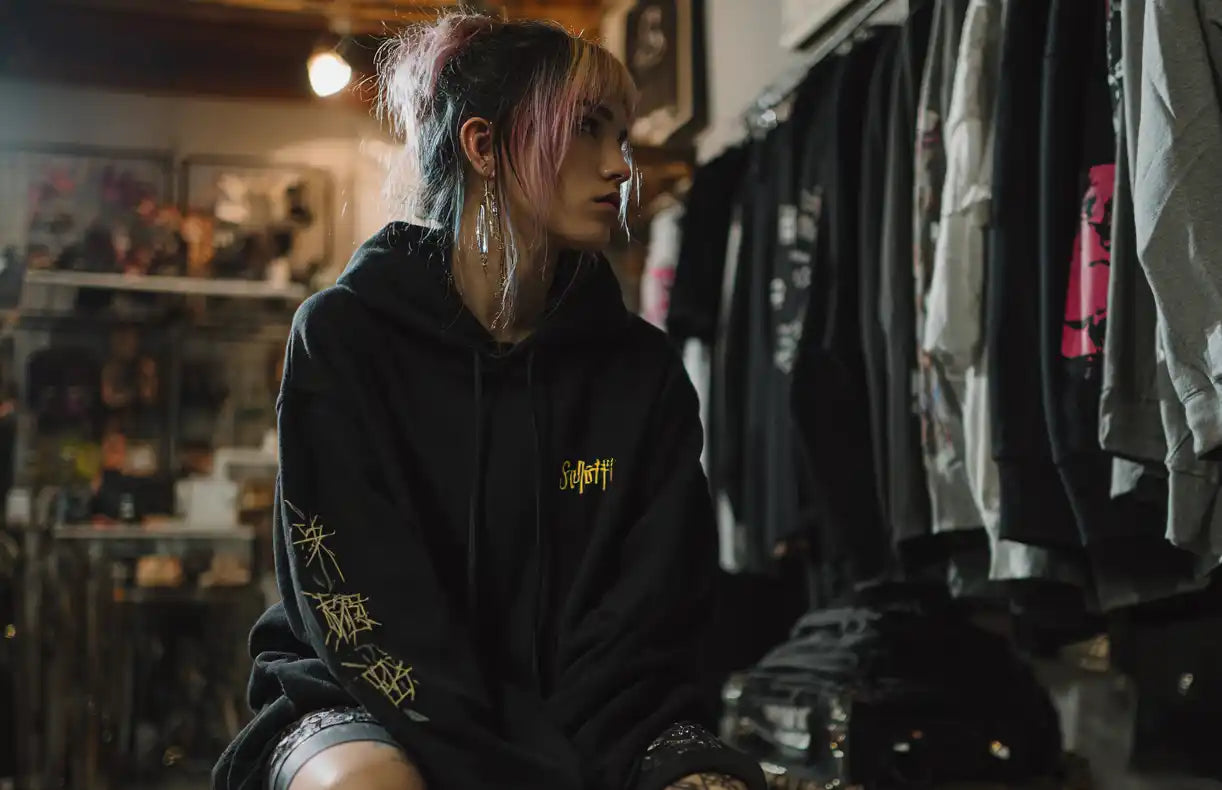
Trends & Designs in Modern Apparel
Oversized fits, streetwear influences, and activewear styles driving custom clothing production.
Explore Trends & Designs for Apparel Development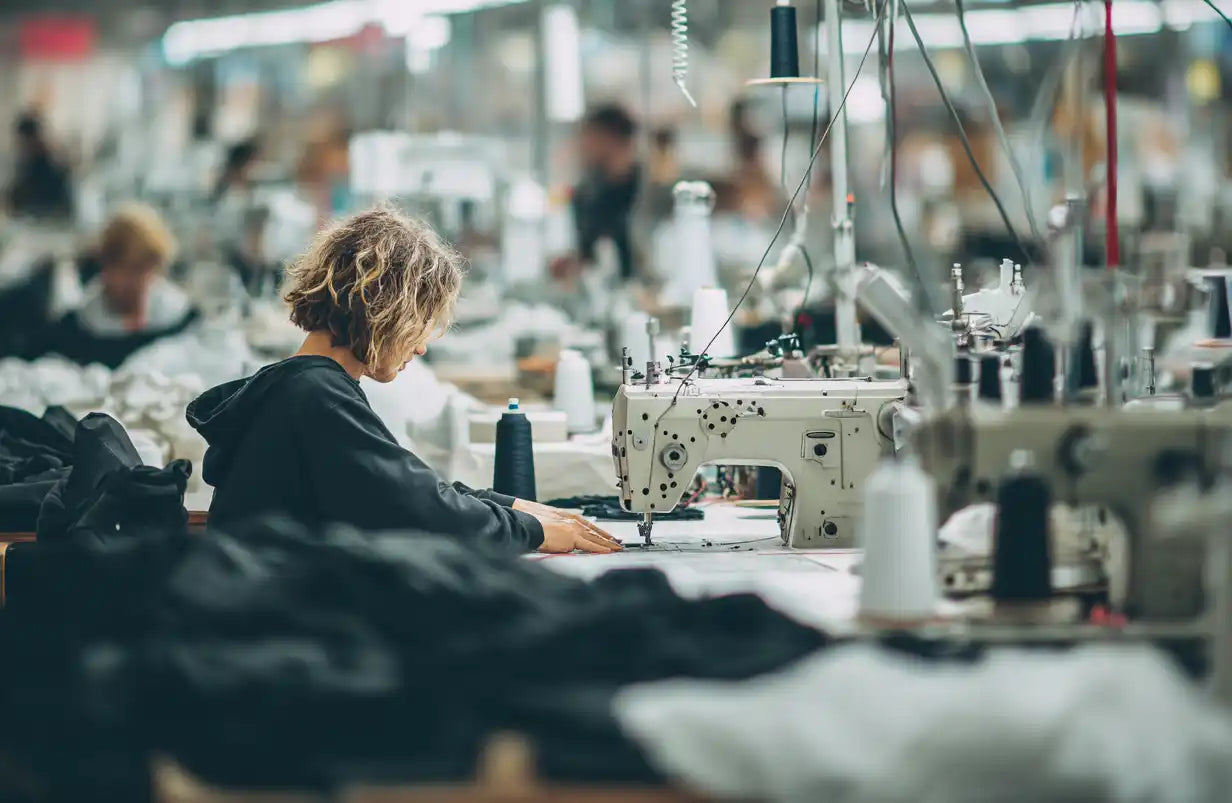
Sustainable & Ethical Clothing Production
OEKO-TEX® certified fabrics, organic cotton, and ethical apparel manufacturing in Portugal.
Understand Sustainable & Ethical Clothing Production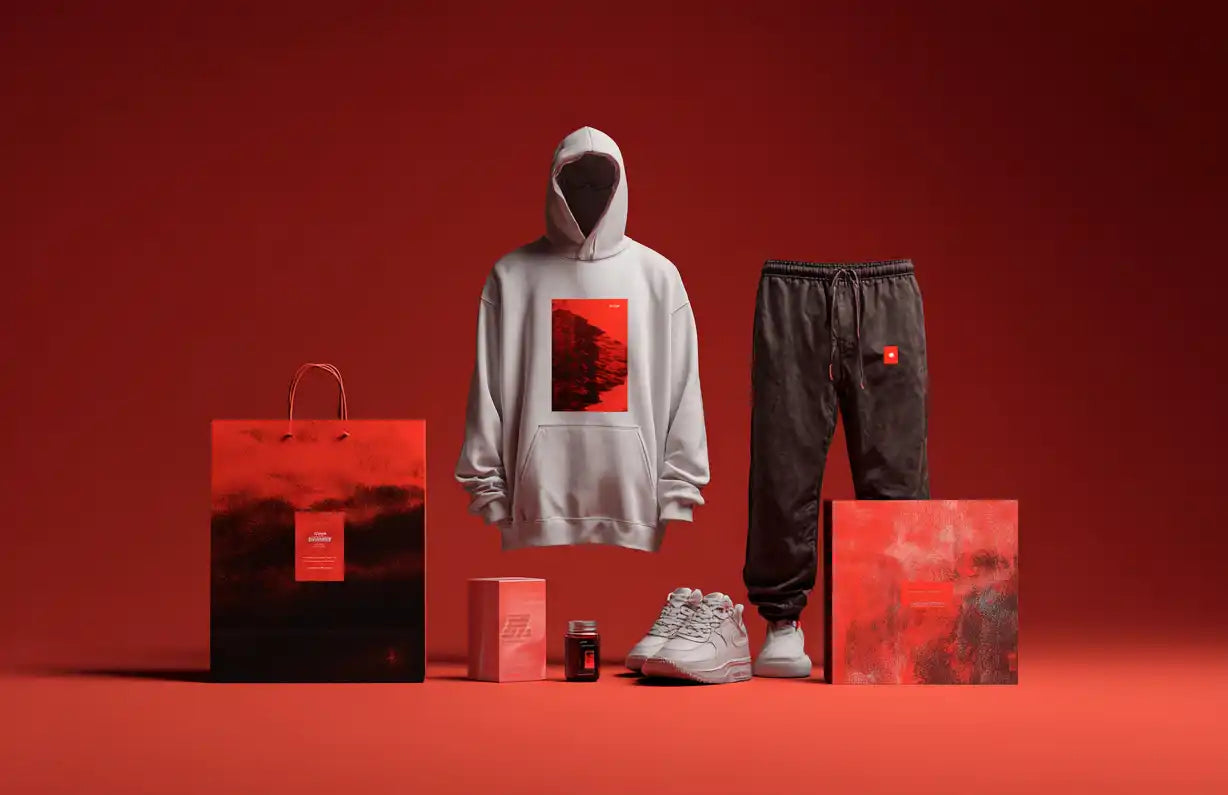
Essentials for Custom Clothing Production
Custom labels, packaging, and trims that elevate your apparel brand in production.
Explore Essentials for Custom Clothing Production
Resources for Custom Clothing Production
Startup guides, logistics support, and scaling strategies for apparel brands and wholesale clients.
Explore Resources for Custom Clothing Production
Clothing Manufacturing Glossary
Explore a complete glossary of clothing and garment manufacturing terms
The Complete Clothing Manufacturing Glossary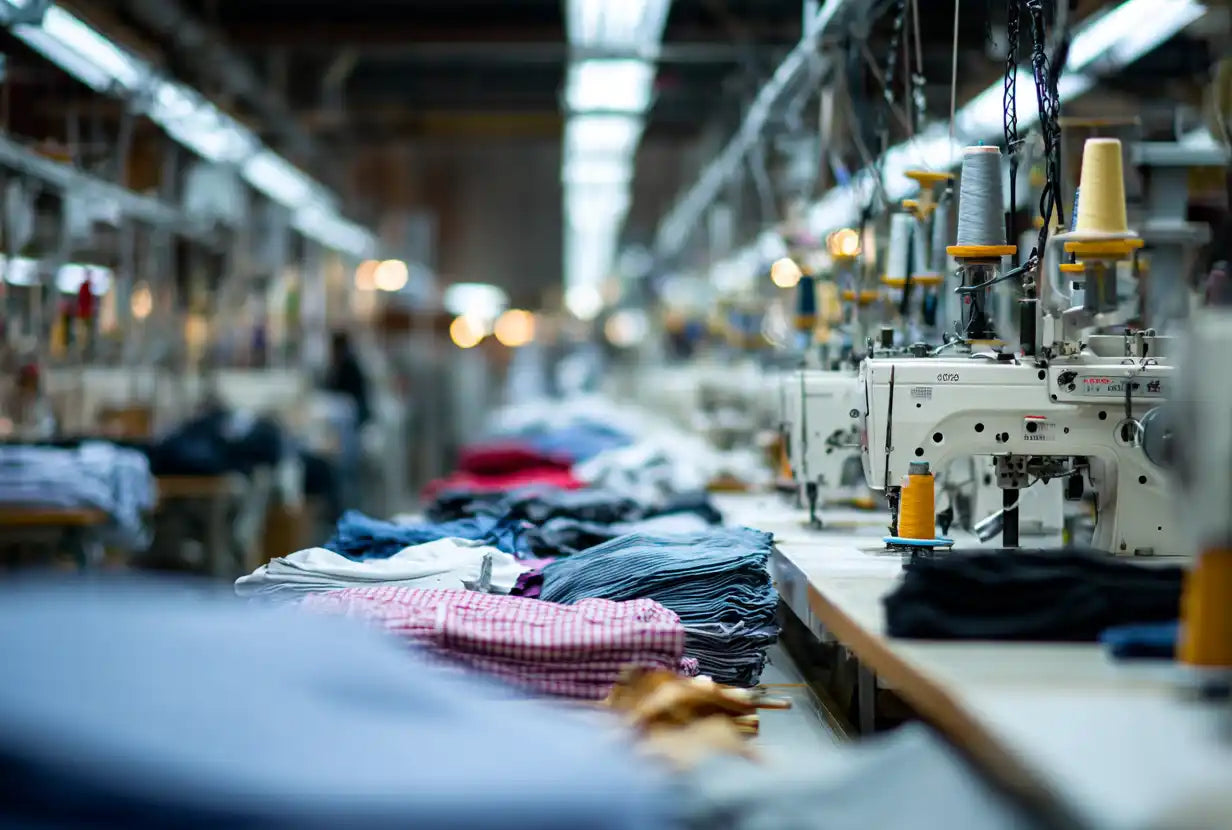
The Best Clothing Manufacturers
Explore global clothing manufacturers by country
Explore The Best Clothing Manufacturers
The Latest Clothing Industry Updates in 2025
Discover the latest news about important topics in the clothing industry in 2025,
Stay On Top Of Clothing Industry Updates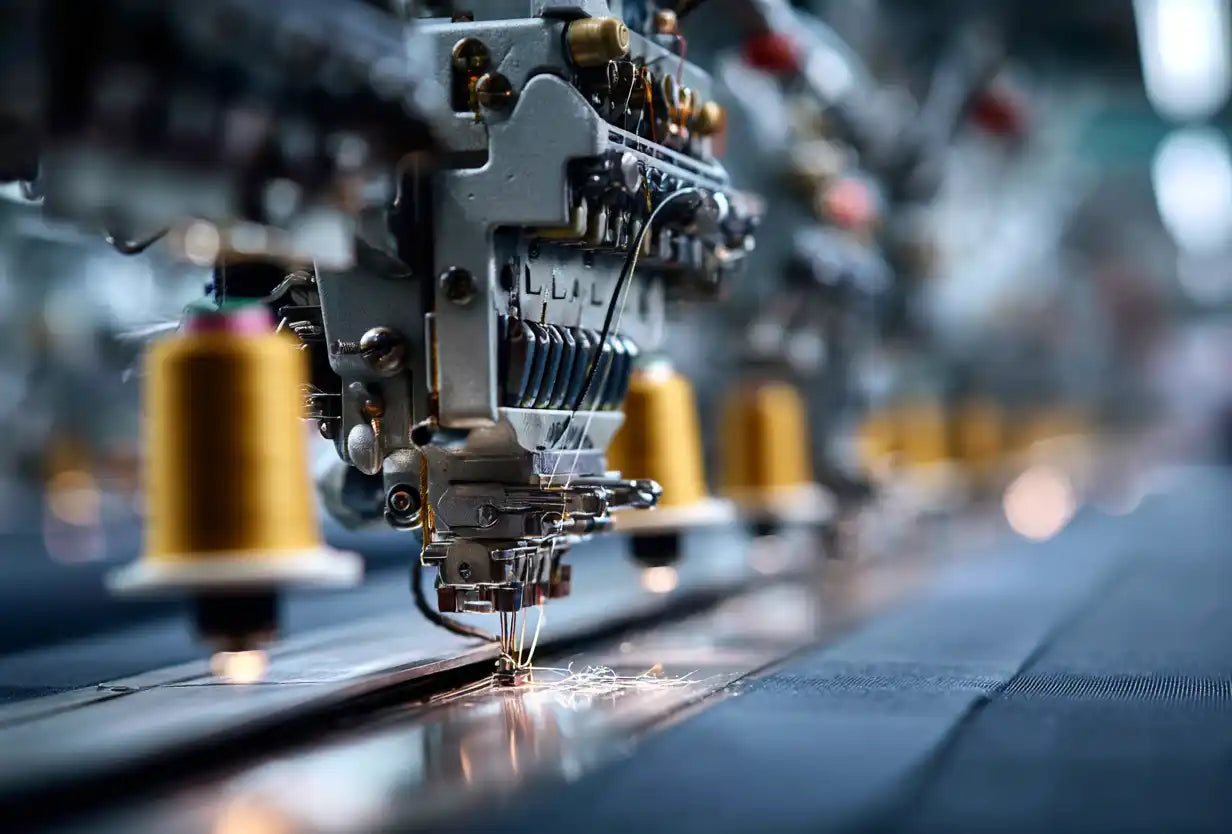
Worldwide Best Manufacturers of Clothes in 2026
Top clothing manufacturers worldwide organized by product type
Find The Worldwide Best Manufacturers of Clothes